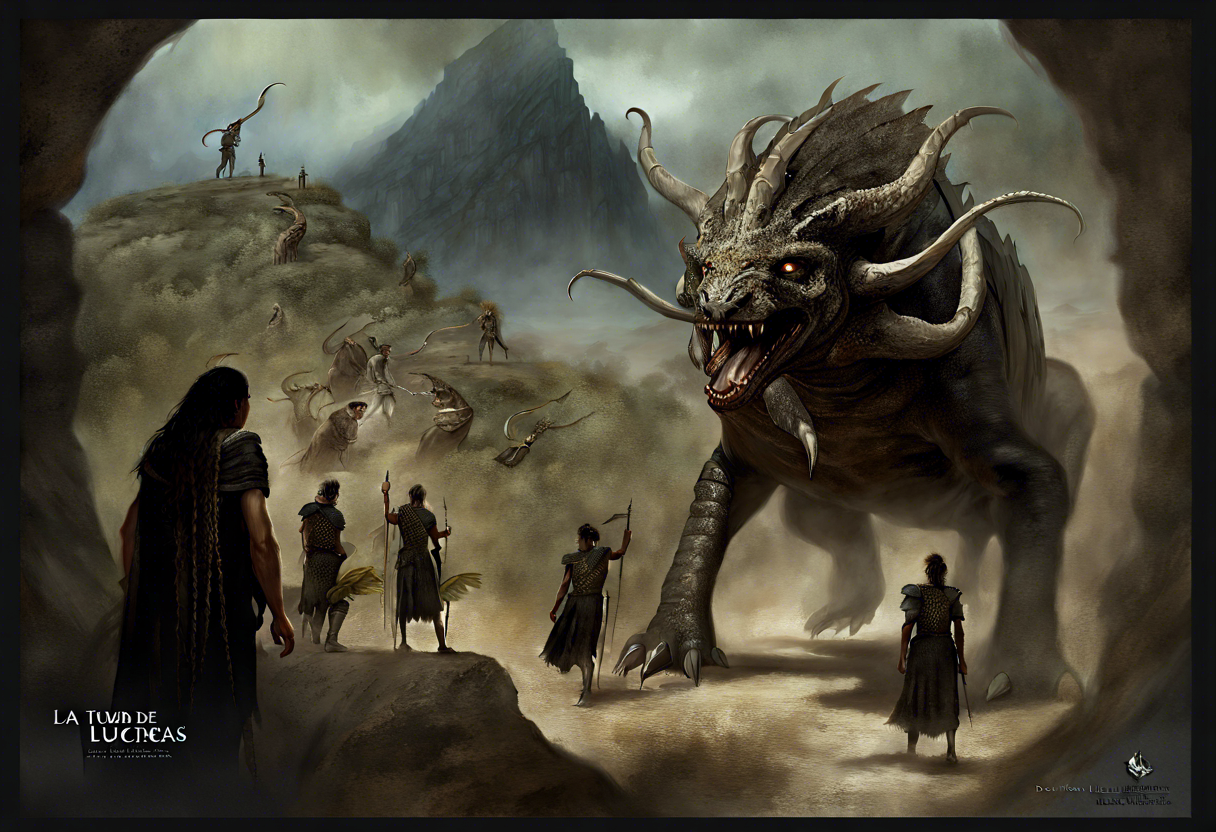“La Tumba de las Luciérnagas” Overview
Exploring “La Tumba de las Luciérnagas”
"La Tumba de las Luciérnagas," translated as "Grave of the Fireflies," is a heart-wrenching novel by Akiyuki Nosaka that delves into the aftermath of World War II in Japan. The story follows the lives of two siblings, Seita and Setsuko, who struggle to survive amidst the devastation of war. The novel provides a raw and poignant portrayal of the impact of conflict on innocent lives, capturing the harsh realities of loss, grief, and resilience.
Set in Kobe, Japan, the narrative unfolds against the backdrop of a war-torn nation, where resources are scarce, and survival is a daily battle. Through the eyes of Seita, the older brother, and narrator of the story, readers are exposed to the hardships faced by the siblings as they navigate a world plagued by destruction and despair. As they lose their mother in an air raid and their father at sea, Seita and Setsuko are left to fend for themselves in a society that has crumbled under the weight of war.
The novel masterfully explores themes of family, sacrifice, and the enduring power of love in the face of adversity. Seita’s unwavering dedication to protecting his younger sister, Setsuko, showcases the lengths to which a sibling will go to provide comfort and solace in a time of chaos. Their bond is depicted as a source of strength and solace, offering a glimmer of hope amidst the darkness that pervades their surroundings.
"La Tumba de las Luciérnagas" is not merely a tale of survival; it is a profound meditation on the human spirit and the capacity for resilience in the direst of circumstances. As Seita and Setsuko navigate the harsh realities of war, their emotional journey resonates with readers, evoking a profound sense of empathy and compassion. The novel elicits a range of emotions, from sorrow and despair to moments of fleeting joy and tenderness, creating a narrative tapestry that is both heartbreaking and beautiful.
In conclusion, "La Tumba de las Luciérnagas" stands as a timeless masterpiece that continues to captivate readers with its poignant storytelling and emotional depth. Akiyuki Nosaka’s evocative prose and vivid imagery bring to life a poignant tale of loss, love, and the enduring human spirit in the face of unimaginable adversity. This novel remains a poignant reminder of the ravages of war and the resilience of the human heart, making it a must-read for those seeking a profound and moving literary experience.
Themes Explored in “La Tumba de las Luciérnagas”
Exploring Themes within “La Tumba de las Luciérnagas”
In the poignant story of "La Tumba de las Luciérnagas," several profound themes resonate with readers, delving deep into the human experience during times of war and hardships. One prevalent theme showcased in this novel by Akiyuki Nosaka is the resilience of the human spirit in the face of unimaginable suffering. Set in Japan during World War II, the story follows Seita and Setsuko, two siblings who strive to survive amidst the chaos and destruction surrounding them. Their unwavering determination to find hope and light in the darkest of times is a powerful testament to the strength that resides within individuals, even in the bleakest of circumstances.
Another significant theme that emerges from the narrative is the profound impact of war on innocent lives, particularly children. Through the eyes of Seita and Setsuko, readers are confronted with the harsh realities of conflict as the siblings grapple with loss, hunger, and abandonment. The author skillfully depicts the innocence of childhood juxtaposed with the harshness of war, highlighting the devastating consequences that armed conflicts can have on the most vulnerable members of society.
Moreover, "La Tumba de las Luciérnagas" explores the theme of family bonds and the sacrifices individuals are willing to make for their loved ones. Seita’s unwavering dedication to protecting Setsuko at all costs, even when faced with insurmountable challenges, underscores the powerful connection between siblings and the lengths one would go to ensure the safety and well-being of family. This theme resonates deeply with readers, evoking a sense of empathy and underscoring the enduring importance of familial ties, especially in times of adversity.
Additionally, the novel delves into the theme of memory and remembrance, emphasizing the importance of preserving the stories of those who have faced hardship and tragedy. By immortalizing the experiences of Seita and Setsuko, "La Tumba de las Luciérnagas" serves as a poignant reminder of the human cost of war and the need to honor the memories of those who have suffered. Through this theme, readers are encouraged to reflect on the past, learn from historical tragedies, and strive to create a more peaceful future for generations to come.
Overall, "La Tumba de las Luciérnagas" masterfully weaves together these themes to create a rich and emotionally resonant narrative that lingers in the hearts and minds of readers long after the final pages. With its poignant exploration of resilience, the impact of war on innocent lives, the power of family bonds, and the importance of memory, this novel stands as a powerful testament to the enduring strength of the human spirit in the face of adversity.
Character Analysis in “La Tumba de las Luciérnagas”
Analysis of Characters in “La Tumba de las Luciérnagas”
"La Tumba de las Luciérnagas" is a poignant tale that delves deep into the lives of its central characters, Seita and Setsuko, exploring their journey through loss, resilience, and the harsh realities of war. Seita, a teenage boy, is portrayed as caring and protective towards his younger sister, Setsuko. His character embodies strength and determination as he tries to shield Setsuko from the horrors of war and provide for her amidst dire circumstances. Seita’s selflessness and unwavering love for Setsuko form the emotional core of the narrative, making him a complex and compelling protagonist.
Setsuko, on the other hand, is depicted as a symbol of innocence and vulnerability in the midst of chaos. Her unwavering trust in Seita and the world around her contrasts sharply with the harsh realities they face, highlighting the impact of war on the innocent. Setsuko’s character brings a sense of poignancy and heartbreak to the story, as her resilience in the face of adversity tugs at the heartstrings of the readers.
The relationship between Seita and Setsuko is central to the narrative, showcasing a bond that transcends the hardships they endure. Their interactions are filled with moments of warmth, love, and fleeting joy, painting a bittersweet picture of sibling affection in the face of tragedy. The portrayal of their dynamic captures the nuances of familial love and sacrifice, resonating with readers on a deeply emotional level.
Moreover, the secondary characters in the story play crucial roles in reflecting the broader impact of war on society. From their distant relatives to the villagers they encounter, each character offers a glimpse into the various responses to adversity and suffering during wartime. Through these characters, the novel explores themes of compassion, selfishness, and the complexities of human nature in times of crisis.
The character analysis in "La Tumba de las Luciérnagas" highlights the depth and complexity of the individuals populating the narrative, showcasing their resilience, vulnerabilities, and emotional journeys amidst the backdrop of war. Each character contributes to the overarching themes of loss, love, and survival, making the story a poignant exploration of the human spirit in the face of unimaginable hardships.
Emotional Impact of “La Tumba de las Luciérnagas”
The Emotional Impact of “La Tumba de las Luciérnagas”
"La Tumba de las Luciérnagas," written by Akiyuki Nosaka, is a poignant and emotionally gripping novel that delves deep into the devastating effects of war on individuals, particularly focusing on the lives of two young siblings, Seita and Setsuko. The emotional impact of this book resonates with readers long after they have turned the final page, leaving a lasting impression that is both heartbreaking and thought-provoking.
One of the most striking aspects of the emotional impact of "La Tumba de las Luciérnagas" is the raw portrayal of the human experience during times of conflict. The author skillfully illustrates the horrors of war through the eyes of Seita and Setsuko, capturing their struggles, fears, and ultimately, their unbreakable bond amidst chaos and despair. Readers are taken on a journey of heartache and resilience, experiencing the full spectrum of emotions as they witness the siblings’ valiant efforts to survive in a world torn apart by devastation.
The novel explores themes of loss, grief, and the resilience of the human spirit in the face of adversity. As readers follow Seita and Setsuko’s harrowing journey, they are confronted with the harsh realities of war and its profound impact on innocent lives. The emotional depth of the narrative evokes a strong sense of empathy and compassion, prompting readers to reflect on the fragility of life and the enduring power of love in the darkest of times.
Through vivid imagery and poignant storytelling, "La Tumba de las Luciérnagas" effectively conveys the emotional toll of war on individuals, highlighting the psychological and emotional scars that linger long after the physical wounds have healed. The novel serves as a powerful reminder of the human cost of conflict, urging readers to confront the harsh truths of history and honor the memories of those who have suffered unimaginable loss.
The emotional impact of "La Tumba de las Luciérnagas" is profound and haunting, leaving a lasting imprint on those who have experienced the profound journey of Seita and Setsuko. The novel’s exploration of love, loss, and resilience in the face of adversity resonates with readers of all ages, serving as a timeless testament to the enduring power of the human spirit in the midst of tragedy.
Comparing the Book to the Film Adaptation
Comparing “La Tumba de las Luciérnagas” Book to the Film Adaptation
"La Tumba de las Luciérnagas," written by Akiyuki Nosaka, is a poignant tale that captures the devastation of war through the eyes of two siblings, Seita and Setsuko. The book delves deep into the themes of loss, resilience, and the struggle for survival amidst the chaos of World War II. When comparing the book to the animated film adaptation directed by Isao Takahata, there are some key differences and similarities that stand out.
One significant difference between the book and the film adaptation lies in the narrative structure. The book provides a more detailed and nuanced exploration of the siblings’ experiences during the war, offering insights into their thoughts and emotions in a profound way. On the other hand, the film adaptation focuses more on the visual representation of the story, using animation to convey the hardships faced by Seita and Setsuko in a visually striking manner.
Another notable difference is the pacing of the story. The book allows readers to immerse themselves in the siblings’ journey over a longer period, giving them a more comprehensive understanding of the challenges they face. In contrast, the film adaptation condenses the narrative to fit within a shorter timeframe, which can impact the depth of emotional connection that viewers feel towards the characters.
Despite these differences, both the book and the film adaptation effectively convey the heartbreaking reality of war and its impact on innocent lives. The vivid descriptions in the book evoke a strong sense of empathy in readers, while the visuals in the film adaptation create a hauntingly beautiful yet tragic portrayal of the siblings’ struggle for survival.
While the book offers a more detailed and introspective look into the characters’ inner world, the film adaptation complements it by presenting a visually captivating interpretation of the story. Both mediums excel in their own ways, capturing the essence of "La Tumba de las Luciérnagas" and leaving a lasting impact on audiences.
Key Takeaway:
"La Tumba de las Luciérnagas" is a powerful story that explores themes of loss, resilience, and the devastating impacts of war, particularly on innocent individuals. Through the character analysis, viewers see the emotional depth and growth of the main characters, Setsuko and Seita, as they navigate the harsh realities of wartime Japan. The emotional impact of the book is profound, leaving readers reflecting on the true cost of conflict and the strength of the human spirit.
The themes explored in "La Tumba de las Luciérnagas" resonate deeply with audiences due to their universal nature. The bond between siblings, the struggle for survival, and the sacrifices made for those we love are all beautifully depicted in this poignant tale. The character analysis highlights the internal struggles and external challenges faced by Setsuko and Seita, drawing readers into their world and evoking empathy and understanding for their plight.
The emotional impact of "La Tumba de las Luciérnagas" is palpable throughout the narrative, as readers are taken on a heart-wrenching journey alongside the protagonists. The raw emotions, poignant moments, and heartbreaking decisions unfold in a way that leaves a lasting impression on anyone who experiences this story. The weight of loss and the resilience of the human spirit are expertly portrayed, making "La Tumba de las Luciérnagas" a truly unforgettable work of art.
Comparing the book to the film adaptation provides a unique perspective on how the story is translated across different mediums. While both versions capture the essence of the narrative, the book allows for a deeper dive into the characters’ innermost thoughts and emotions, enhancing the overall impact of the story. The film, on the other hand, brings visual elements to life, creating a vivid portrayal of the events depicted in the book.
In conclusion, "La Tumba de las Luciérnagas" stands as a timeless masterpiece that delves into the complexities of human nature, the bonds of family, and the enduring effects of war. Through its thematic depth, rich character development, and emotional resonance, this story continues to captivate audiences and serve as a poignant reminder of the harrowing consequences of conflict.
Conclusion
In conclusion, "La Tumba de las Luciérnagas" is a poignant and profound book that delves into themes of resilience, loss, and the enduring power of love during times of adversity. Through the characters of Seita and Setsuko, Akiyuki Nosaka paints a heartbreaking yet beautiful portrayal of the impact of war on innocent lives. The book serves as a stark reminder of the harsh realities faced by civilians during wartime and the sacrifices that are often made in the name of survival.
The themes explored in "La Tumba de las Luciérnagas" resonate deeply with readers, as they confront the harsh realities of war, the enduring bond between siblings, and the resilience of the human spirit in the face of unimaginable tragedy. The novel’s exploration of loss and grief is particularly poignant, as it highlights the profound ways in which individuals cope with trauma and find solace in memories of happier times.
Through a detailed character analysis, readers gain insight into the complex personalities of Seita and Setsuko, who symbolize innocence, hope, and the devastating impact of war on young lives. Seita’s unwavering determination to protect his sister, Setsuko’s innocent yet profound understanding of their dire circumstances, and their shared moments of joy amidst the darkness all contribute to the emotional depth of the narrative.
The emotional impact of "La Tumba de las Luciérnagas" is profound, leaving readers with a deep sense of empathy for the characters and a heightened awareness of the human cost of war. The novel’s raw and unflinching portrayal of suffering and loss evokes a range of emotions, from sorrow and heartache to moments of bittersweet tenderness and hope.
Comparing the book to the film adaptation of "La Tumba de las Luciérnagas" reveals both similarities and differences in the portrayal of the story. While the book provides a more detailed and introspective exploration of the characters’ inner thoughts and emotions, the film conveys the visual and auditory aspects of their journey with striking imagery and poignant music. Both the book and the film offer unique perspectives on the narrative, enriching the overall experience for audiences.
In essence, "La Tumba de las Luciérnagas" is a timeless masterpiece that continues to touch the hearts of readers and viewers alike with its powerful storytelling, profound themes, and unforgettable characters. Akiyuki Nosaka’s work shines a light on the enduring power of love, compassion, and the human spirit in the face of unimaginable suffering, leaving a lasting impression on all who delve into its pages or immerse themselves in its cinematic adaptation.



